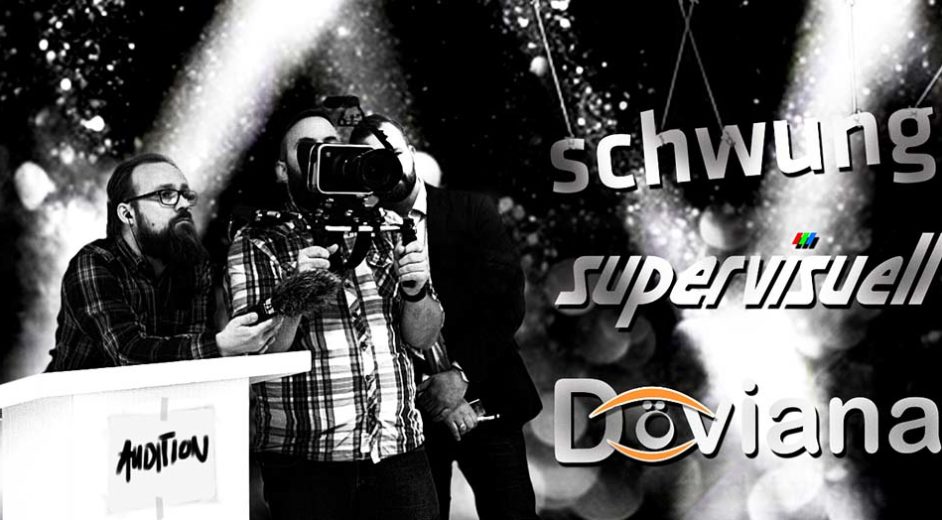Nordic Website Offers Deaf Young People New Opportunities
By Joan Rask
The project expands the young people’s social arenas. So says Finn Arild Thordarson, general manager of Norwegian Supervisuell that produces film and other visual material specially for deaf people. Supervisuell is one of three Nordic partners in project TegNorden, which provides deaf people and hearing impaired children, young people, and adults the opportunity to improve their sign language to be able to understand one another across the Nordic countries – or, rather, understand one another in Swedish, Norwegian, and Danish. Sign language namely varies by country.
“The website “TegNorden” makes it easier for young people to get in touch with other deaf people in other Nordic countries, because the website explains the differences – and the young people need that,” says Finn Arild Thordarson.
The matter is that schools for deaf people are closed down many places in Norway. Finn Arild Thordarson is certain that it makes it even more difficult for young people to establish a network with other hearing impaired people.
“TegNorden acts as a great counterbalance, because the young people see that it is possible to meet other likeminded people both at home in Norway and other places in the Nordic countries,” he says.
It is namely not straight forward when you are young and hearing impaired and your only communication is in a language which is one hundred percent either visual or written. The phone is not a possibility, online meetings only work well provided the people know each other and are of the same nationality – thereby speaking the same sign language.
There are about 4.000 deaf people using sign language in Denmark. There are about 5.000 in Norway, and almost 10.000 deaf people in Sweden. Olivia Egeberg, tv-organiser and host at the Danish Deaf TV and former project manager of the Danish part of the project, emphasises that TegNorden is of great value for the young people’s identity.
“Denmark is a small country, so it means a lot that young Danish people establish friendships across the Nordic countries. Our experience is that it provides a better sense of identity as a deaf person and as an individual when meeting more likeminded people,” says Olivia Egeberg.
Produced by young people
The website’s design and content is largely produced by young hearing impaired people. It is significant in multiple ways – both because the website works as intended – a cultural Nordic meeting point for deaf young people and other hearing impaired. But besides that, the project is a spare time job.
“Young deaf people have difficulties finding a spare time job. It is hard for the hearing, and, of course, even harder for our young people. The job with us became a way of accessing the labour market,” says Viktor Jæderlund from the institute Döviana, the Swedish partner in the project.
He explains that the young Swedish people in the project enjoyed the opportunity to collaborate internationally – and at the same time they gained useable knowledge. Knowledge which is now freely available for everyone both in Sweden and in other Nordic countries.
“The films on the website inform, for example, about educational opportunities for deaf people in Norway, Denmark, and Sweden. It means that young people discover educational opportunities in other countries, and the possibility of establishing international friendships – also for deaf people,” he says.
Friendships grew among the young people already while the films were being produced, but it was not only among the young people.
“I had a lot of positive experiences, and I am still in contact with a lot of people from the project. It has been really good,” says Viktor Jæderlund.
Better than expected
Viktor Jæderlund admits that there have been issues during the course of the project. He believes that expectations to what the website would be able to do were too high in the beginning.
“When we got the ambitions and economy to line up with the end product, it went better,” Viktor Jæderlund says.
Finn Arild Thordarson nods, recognising it.
“Norway is an elongated country, and we could not include all variations. I would really like to have included Lofoten, the northern light, and Sami culture as well,” he says.
All three are very satisfied with the end product – a website in all three languages (Danish, Norwegian, and Swedish), which shows the most common national differences between signs and gestures, and it makes it possible for deaf people to communicate across the three sign language cultures.
“The website turned out a lot better than I expected, and it feels really good to have created it. Collaboration in a project, as with this, is incredibly important, and it has worked well so far,” Viktor Jæderlund says.
Though everyone is happy with the project, the prospects of the project are dire.
The future is uncertain
In Denmark, Olivia Egeberg has encouraged all schools for the deaf to use the website material and include it in teaching about the Nordic countries.
“We have not researched its value directly, but we hope they utilise the material. But unfortunately no one has taken the responsibility of maintaining and developing the website in the future, so it is uncertain what is going to happen next,” she says.
Olivia Egeberg is not the only one who dreams about continuation of the project. Finn Arild Thordarson and Viktor Jæderlund too hope the project gets new life. All three partners wish to continue the collaboration and expand the website with more Nordic material aimed at young people.
“The website helps strengthening the young people’s identity as hearing impaired. Association with a network for deaf people in the rest of the Nordic countries is actually more important than the common national identity,” says Olivia Egeberg.
Read the article in a Nordic language
Nordisk hjemmeside giver døve unge nye muligheder
More information
The homepage TegnTube.com
Picture above:
Foto: Supervisuell (presse)
Coordinating institution
- Schwung (private Enterprise)
Partner institutions
Program
- Nordplus Nordic Languages
